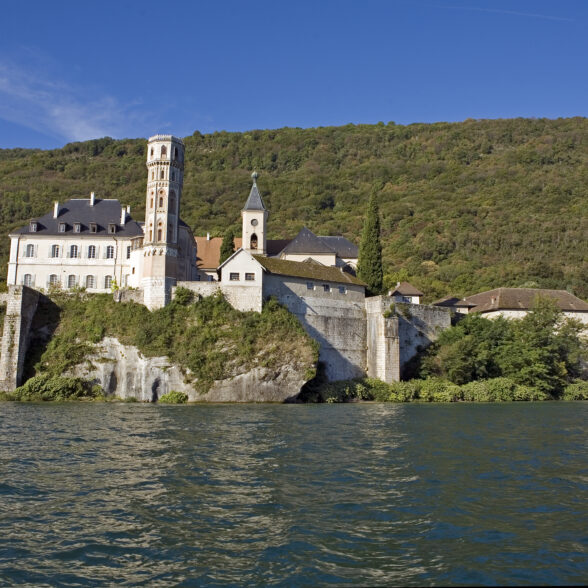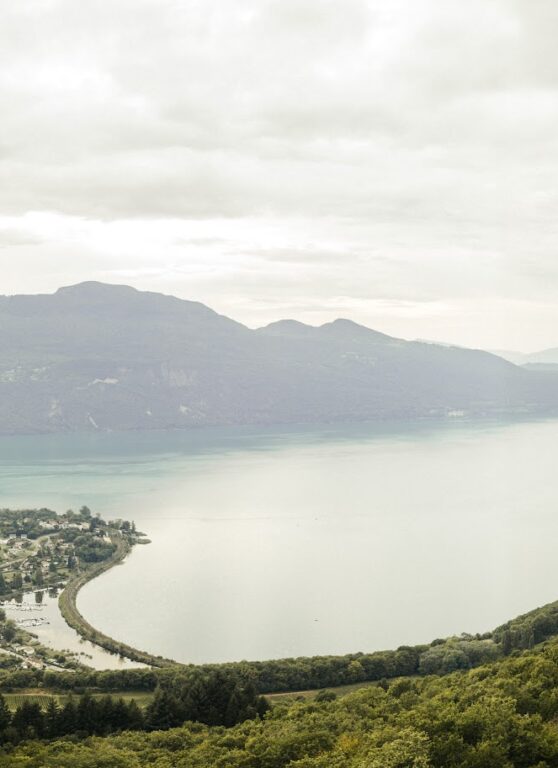
The lac du Bourget
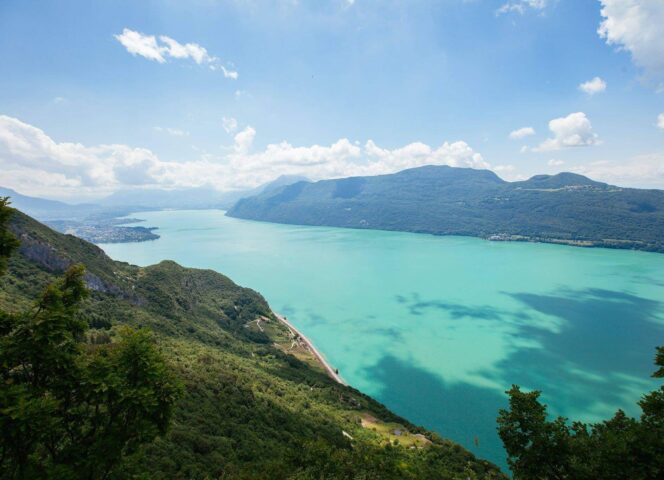
Exploring the lac du Bourget
the biggest natural lake in France18 km long, Bourget Lake is a unique natural site where mountains form a sheer backdrop to the turquoise water. The water temperature reaches 28°C in summer, offering an ideal, unspoilt setting for the joys of watersports and activities on the beach. It is the biggest natural glacier lake in France, and also the lake with the highest volume of water!
The lake instils the desire to take things easy and to experience the world in a more meaningful way in order to fully appreciate the surroundings.
The mountains around it offer beautiful panoramic views that can be enjoyed at any time of day, enhanced by the sunlight and admired from some stunning angles. The following panoramic viewpoints are just a few examples:
- The Ontex viewpoint overlooking Hautecombe Abbey. This offers a picture-postcard view over Châtillon and the hills of Brison-Saint-Innocent
- At the end of the day, La Chambotte lookout point offers a breathtaking view of the entire lake.
- Le Revard towers majestically above the region of Aix les Bains Riviera des Alpes with an overhanging glass walkway that gives you the feeling of floating above this fabulous landscape.
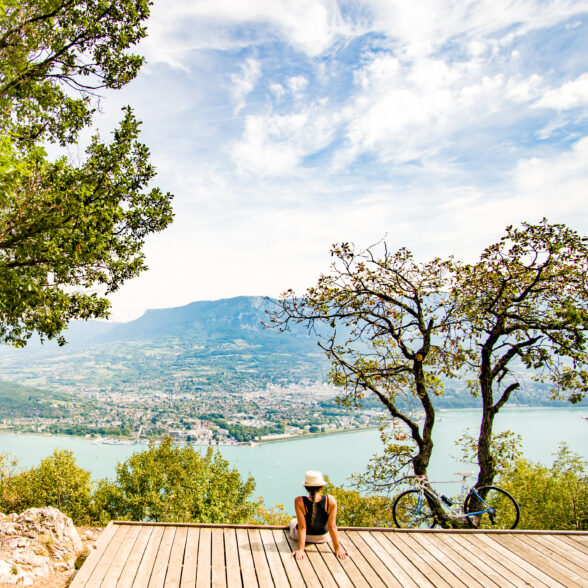
the fauna and the flora
Of the lac du BourgetThe reed beds that border the lake are natural reserves for the birds that live there: ducks, great crested grebes, swans, pond turtles, etc. are all species that the Savoie Natural Heritage Conservatory works to preserve. The lake is an important migratory passage for birds that can be observed during these periods.
The Aigrettes Observatory is the ideal place to get closer and meet them more closely, if you remain silent and discreet!
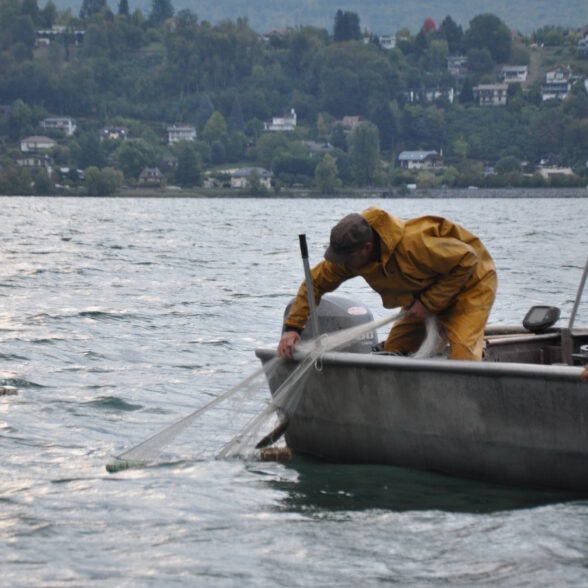
Fishing is also allowed on the lake, where eight professional fishermen still make a living from this activity. The nearby restaurants are their primary customers, eager to offer these fish, the most iconic of which is the lavaret.
Novices can be accompanied by a professional to engage in this activity, which appeals to both young and old. Catch and release will appeal to those who wish to return their catches to the water!
The fishing center will provide good advice to get you started and accompany you during a session on the lake.
To better understand and appreciate life in and around the lake, Aqualis, the Lake Bourget Interpretation Center, is the most suitable place to visit with family. There, you will find the names of the fish that live in the lake’s waters as well as the species that nest along its shores. It’s a rich educational experience complemented by a giant screen film, interactive games, and more.
Nautical activities
On the lac du BourgetA vast aquatic playground, the lake offers a wide range of activities, both gentle and more active, to enjoy the pleasures of the water and escape:
- A boat cruise along the water will guide you to Hautecombe Abbey before continuing towards the Savière Canal.
- Experience unique moments with family or friends on a boat that will take you to a natural beach on the Côte Sauvage, where you can play at being Robinson Crusoe.
- Discover water activities to share with friends: stand-up paddleboarding, canoeing, canyoning…
- Enjoy a moment of inner relaxation with a paddle yoga session in a pristine environment.
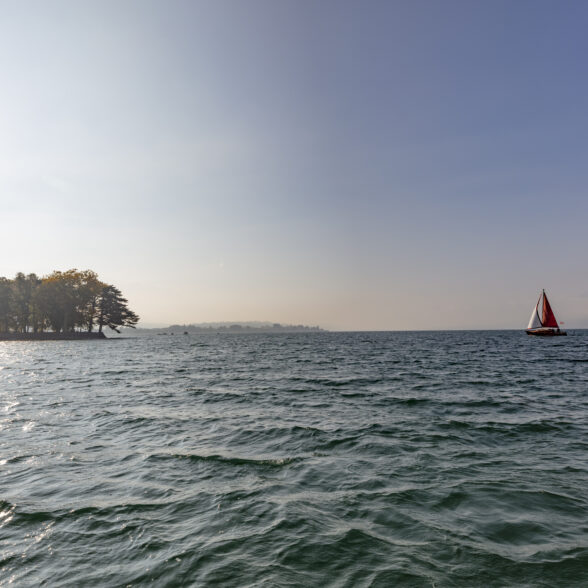
Choose the lake
At your own pace !Certified since 2000, the Aix les Bains Riviera des Alpes Nautical Station guarantees a high level of service for water activities along the 18 km length and 3.5 km width of Lake Bourget: rowing, sailing, fishing, wakeboarding, diving, water skiing.
With an average water temperature of 26°C in summer, 14 ports, and 9 beaches, the ideal conditions are in place for a successful stay!
Relaxation
On the beachesThe beaches around the lake will appeal to everyone’s desires for swimming, sunbathing, relaxing, and playing with family or friends!
In season, most beaches are supervised and have an entrance fee for everyone’s safety. Note: the Aqualac center offers a great play area with a pool, a paddling pool for little ones, and direct access to the lake.
- 1
- 2
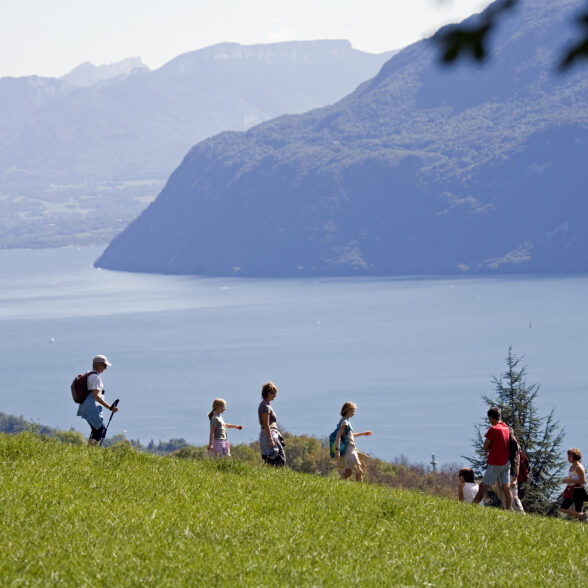
Natural activities
Around the lac du BourgetThe hiking trails also allow you to discover this wild environment with commanding views of the lake. These trails are suitable for all levels: experienced hikers or beginners. Whether it’s on the Dent du Chat, along the wild coast, or in the Corsuet forest, you’ll find numerous hikes for everyone.
Not to mention the routes that cross our territory: the Way of Saint James and the Huguenot Trail.
A new trend has been developing around the lake for a few seasons: geocaching. It’s another way to explore the area and hike. The principle is simple: search for hidden caches in nature, near a site or monument. The quest for these clues allows you to walk around while having fun and having a goal for a half-day or a full day, depending on how long you wish to engage in the activity.
The more athletic individuals will enjoy mountain biking or cycle touring through the Chautagne and Albens areas, nature havens with quiet and marked roads and paths.
Cycling enthusiasts can indulge in beautiful rides along the water, traveling the ViaRhôna, which crosses the northern part of the territory. Suitable for the general public, the route is easy and ideal for family exploration. A stop in Chanaz, by the Savière Canal, will be the perfect excuse for a well-deserved snack break! Here’s a six-step itinerary to discover the ViaRhôna in Aix-les-Bains Riviera des Alpes.
The more trained riders will hop on their mountain bikes to pedal the marked trails of the ViaRhôna, which extend along the Chemins du Soleil. This route connects Lake Geneva to the Mediterranean, passing through Chambotte and Col du Chat. A wonderful experience to share with friends!
Novices can explore the Chautagne poplar grove and the trails of the Albens area, sheltered from the sun. With over 180 km of routes, you have an ideal playground.

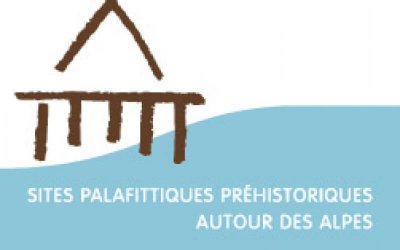
The lac du Bourget
And the HistoryTraces of the past are very much present around the lake.
Human presence dates back to the earliest times, the prehistoric age. Evidence of life has been discovered around the lake but especially underwater: the pile-dwelling sites testify to this presence. These are the ruins of villages submerged under water, not visible from the surface. The stakes that supported the dwellings have withstood the test of time.
This heritage remains largely secret and is difficult to showcase today. These remains have been classified as UNESCO heritage sites since 2011.
